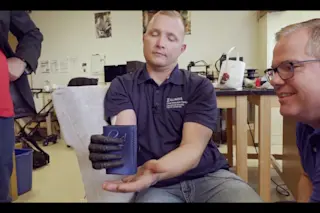To get better gas mileage, engineers are fussing with the structure and composition of tires. The latest advance comes from a material at the beach.
Of all the technology that goes into new cars, tire technology may be the least appreciated. Tires are certainly not the first thing consumers think about when shopping for a car. Indeed, we tend to notice them only when they go flat or wear out. But tires are not just hunks of rubber--they’re a complex blend of materials--and their design is increasingly sophisticated, as automakers push for every edge in fuel economy.
A tire is a horribly complex thing to design, says Dieter Overhoff, an engineer with the Pirelli Armstrong Tire Corporation in Breuberg, Germany. From a physicist’s point of view, we are dealing with a very strange material. The compounds we use don’t behave in a linear fashion. And the interaction of these various ...














